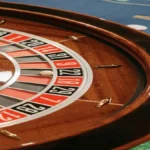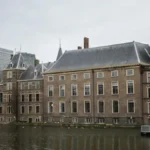If you’re searching for cities of Marrakech, you’re likely looking to understand the distinct districts and satellite towns within this famed region—its medina neighborhoods and newer suburbs, each with its own character. Marrakech is not just one city but a mosaic of communities, from the historic souks of the medina and bohemian flair of Gueliz to the upscale streets of Hivernage and the growing town of Sidi Abdellah Ghiat. This article immerses you in each of these dynamic zones, showcasing their unique histories, architecture, cultural life, and how they knit together.
A Brief Overview of Marrakech’s Urban Landscape
Once a caravan crossroads and an imperial capital, modern Marrakech consists of a historic medina surrounded by expansive newer districts and fast-growing satellite communities. Together, they form a regional metropolis—each contributing to the city’s economic vitality, cultural diversity, and urban personality. To understand Marrakech today, it helps to know its key “sub-cities”:
- The medieval medina, a UNESCO World Heritage site
- Gueliz, the French-built art and shopping district
- Hivernage, home to luxury hotels, music venues, and embassies
- Palmeraie, the palm oasis focused on tourism and leisure
- Sidi Abdellah Ghiat, a booming new residential area
- Smaller outlying districts now becoming suburban extensions
Each section of Marrakech owes its identity to different historical moments, architectural styles, and resident communities.
The Medina: Where Marrakech Began
The medina lies at the city’s nucleus—an organic labyrinth of narrow alleys, riads, mosques, and palaces. Founded in the 11th century by the Almoravids, it remains a deeply lived environment, not only a tourist attraction.
Key features include:
- Jemaa el-Fnaa square, the medina’s vibrant heart at dawn and dusk
- Souk paths like Souk Semmarine (textiles), Souk Haddadine (metalwork)
- Historic mosques: Ben Youssef, Koutoubia (just outside)
- Intricate palaces and gardens: Bahia, Dar Si Said, Saadian Tombs
- Residential quarters—Kasbah, Bab Doukkala, Mellah—where generations live in layered communal houses
This core district has preserved centuries-old traditions, craftsmanship, and community life. It’s the place where Marrakech’s intangible culture—storytelling, street food, call to prayer—continues to thrive.
Gueliz: Art, Cafés, and Modern Morocco
To the north of the medina lies Gueliz, established during the French Protectorate era (1912–1956). With wide avenues, art galleries, and chic boutiques, it reflects Marrakech’s 20th-century modernization.
You’ll find:
- Gueliz Avenue and Boulevard Mohammed V lined with cafés, cinemas, and bookstores
- Le Jardin Secret, a Mamluk-era garden restored into a public oasis
- International art spaces like MACMA and contemporary cafés
- International supermarkets, banks, and expat homes
Gueliz represents Marrakech’s cosmopolitan present—a place to observe evolving Moroccan middle-class life alongside artisans and tourists.
Hivernage: Luxury and Nightlife in the White City
Just south of the old city walls, Hivernage combines residential calm with gleaming hotels and nightlife. Once a French summer retreat, today it hosts grand resorts, cultural venues, and leafy streets.
Highlights include:
- Upscale hotels: La Mamounia, Royal Mansour
- Rooftop lounges and live-music bars
- Tree-lined avenues like Hivernage and Omar Ibn Khattab
- Several embassies and NGO offices
Hivernage is Marrakech’s celebration district—for live jazz, high-level meetings, or indulgent spa retreats in elegant riads.
Palmeraie: Oasis into the Outskirts
Stretching north of the city center, Palmeraie is an artificial development around an ancient palm oasis. Once used for date groves, it’s now characterized by:
- Luxury resorts along the oasis
- Golf courses, equestrian centers, sand dunes
- Sprawling villas and gated communities
- Eco-friendly forestry projects
Palmeraie is a deliberate re-creation of Marrakchi oasis life, tailored to tourism—ideal for visitors seeking space, shade, and exclusivity.
Sidi Abdellah Ghiat: New Residential Horizons
Emerging in the 2000s, Sidi Abdellah Ghiat represents upscale suburban expansion. Initially a government housing initiative:
- Elegant property subdivisions with open squares
- Small shopping malls, schools, clinics
- Road projects improving connectivity to the medina
- Young families, public servants, middle-class residents
In just a few years, it has become a self-sufficient satellite town reflecting Morocco’s shifting demographics and rising expectations.
Other Developing Suburbs: From Université to Route de Fès
Marrakech’s outward leap continues:
- Route de Fès district—city dormitories near the university, shopping centers, cinemas
- Targa area—fast-growing residential blocks, restaurants
- Agdal—a pre-protectorate elite neighborhood now blending modern villas with traditional architecture
Each area adds strands to the metropolitan mosaic—expanding infrastructure, new industries, and urban nightlife.
Table: Comparative Snapshot of Marrakech’s Urban Districts
|||
| District/Sub-city | Key Features | Distinct Character |
| Medina | Souks, Islamic heritage, living quarters | Ancient heart, sensory immersion |
| Gueliz | French-era architecture, boutiques, cafés | Cosmopolitan, creative expression |
| Hivernage | Luxury hotels, nightlife, diplomatic zones | Opulence and cultural performance |
| Palmeraie | Palm grove resorts, golf, dunes | Oasis leisure, resort-driven design |
| Sidi Abdellah Ghiat | Suburban villas, schools, shops | Middle-class growth, planned living |
| Route de Fès & Targa | Apartment blocks, cinemas, markets | Urban convenience, youthful energy |
| Agdal | Elite villas, gardens, older wealth | Historic prestige meets modernity |
Lives and Beating Hearts Across Districts
Each area of Marrakech reflects a different way of living:
- In the medina, families pass down riads; street life is intimate and shared.
- Gueliz residents stroll café terraces, balance modernity and heritage.
- Hivernage’s ex-pat crowd gravitates toward cultural evenings at La Mamounia or pop-up jazz performances.
- Palmeraie caters to vacationers, golfers, corporate retreats.
- Sidi Abdellah Ghiat reflects a growing Moroccan middle class—focused on school improvements, playgrounds, daily domestic life.
- Route de Fès and Targa brim with under-30s, university students, and suburban dynamism.
Understanding the city means seeing how these groups live, work, and connect.
Connecting the City: Transport, Infrastructure, and Urban Planning
Marrakech’s growth has required more than just architecture; it demands connectivity. The city has invested heavily in:
- Road widening: Improvements on Route de Fès and Gueliz main boulevards
- Tramway Line T1: Running through Gueliz into Agdal, connecting to the new residential zones
- Airport expansion: Allowing more international flights and supporting tourism economy
These projects knit new districts closer to the medina, sustaining old-world charm while absorbing urban pressure.
Culture and Festivals Across Locations
Each quarter hosts its own rhythm of life:
- Medina: daily souks, Ramadan nights, storytellers at Jemaa el-Fnaa.
- Gueliz: Weekly flea markets, contemporary art workshops, film screenings.
- Hivernage: International music festivals, embassies’ open houses.
- Palmeraie: Polo tournaments, family rides through dunes.
- Sidi Abdellah: School festivals, weekend cookouts in community gardens.
- Route de Fès: University cultural weeks, youth theater performances.
Through them, Marrakech remains both tradition and invention—its pulse found in lifecycles of neighborhoods old and new.
Heritage vs. Innovation: Opportunities and Challenges
Balancing rich medina heritage with modern expansion is Marrakech’s urban challenge:
- Infrastructure strain: traffic congestion, water use, waste handling
- Land-value shifts: older homes lose value as young professionals settle in tower complexes
- Cultural dilution: risk that medina families get priced out
- Heritage tourism vs. local life: ancient streets geared to cameras, not daily routines
Urban planners are seeking inclusive development models—restoration, zoning, affordable housing—that respect heritage and enable modern livelihoods.
Residential Life: From Riads to Villas
Living styles highlight contrasts:
- In the medina, people may share kitchens with neighbors; courtyards both private and communal
- In Hivernage and Palmeraie, luxury villas with pools and gardens provide contentment
- Gueliz offers apartments above shops and cafés with terraces
- Suburbs like Sidi Abdellah feature single-family homes, gated entrances and playgrounds
Each lifestyle experience shapes how residents interact with public space, neighbors, and visitors.
Business and Innovation Across Districts
The economy varies patchwork style:
- Medina: traditional crafts—textiles, leatherwork, communal ateliers
- Gueliz: start-ups, tourism-focused design firms, galleries
- Hivernage: event management, cultural festival organizers
- Palmeraie: hospitality management, agriculture – date farms
- Sidi Abdellah: SME clusters—construction firms, home services, local professional offices
Ecosystems intertwine: medina crafts get re-branded in Gueliz boutiques; suburban demand fuels supply chains to older quarters.
Table: Quality of Life by District
|||
| Indicator | Medina & Agdal | Gueliz & Hivernage | Palmeraie | Sidi Abdellah & Suburbs |
| Atmosphere | Historic richness, rough roads | Urban services, modern shops | Quiet, leisure-focused | Family-friendly, planned |
| Connectivity | Pedestrian lanes, tram edge | Tram station, taxis, buses | Car-dependent | Shared roads to city center |
| Housing Type | Riads, heritage homes | Apartments, condos, villas | Resorts, gated estates | Gated residential clusters |
| Services | Hammams, souks, communal wells | Supermarkets, pharmacies | Resort restaurants, clinics | Malls, schools, local clinics |
| Cost of Living | Varies, heritage premiums | High for flats; mid-rent street | High for resort leases | Moderate – growing demand |
| Cultural Offerings | Storytelling, trade, festivals | Cinema, galleries, embassies | Polo, agritourism | School events, parks |
Sustainability and Urban Growth
Marrakech’s trajectory brings critical environmental questions:
- Water usage – Palm groves, golf courses, domestic needs
- Waste systems – Managing day-to-day refuse from expanding quarters
- Energy use – Demand for electricity and transit electrification
- Green belts – Maintaining agricultural perimeter against development
- Heritage conservation – Retrofitting medina dwellings without losing authenticity
City planners are exploring solar water heaters, greywater recycling, and smart lighting in suburban communities to boost sustainability.
The Future City: Visionary Marrakech
Looking ahead, Marrakech aims to:
- Expand public transit with new tram lines to suburbs
- Complete a heritage action plan for medina renovation
- Develop eco‑housing projects in Palmeraie and Agdal
- Promote tech‑friendly districts near university and Gueliz
- Launch community‑based tourism in suburban olive groves
These efforts reflect a city in transformation—anchored by tradition but buoyed by ambition.
Final Reflection: Marrakech as Many Cities in One
Marrakech is not a monolith—it is a web of interlinked sub-cities, each offering unique layers of culture, architecture, or lifestyle. From sunset prayers in the medina to weekend family life in Sidi Abdellah, each neighbourhood speaks to varied experiences:
- The medina shows how place shapes identity
- Gueliz blends modern desires with creative energy
- Hivernage offers cosmopolitan luxury
- Palmeraie connects leisure and green space
- Suburbs like Sidi Abdellah chart the city’s future
Understanding Marrakech means seeing through these kaleidoscopic lenses—so that what appears as one city is really many cities living side by side, feeding its pulse and shaping its soul – Cities of Marrakech.
Frequently Asked Questions (FAQs)
1. What are the main districts or “cities” within Marrakech?
Marrakech is composed of distinct districts that function like “sub-cities,” including the historic Medina, modern Gueliz, luxurious Hivernage, oasis-like Palmeraie, and emerging suburban zones like Sidi Abdellah Ghiat and Targa. Each area has a unique character shaped by history, architecture, demographics, and purpose.
2. How is the Medina of Marrakech different from other parts of the city?
The Medina is the oldest part of Marrakech, dating back to the 11th century. It features narrow alleys, traditional souks, riads, and historic landmarks. In contrast to newer districts, the Medina is densely populated, culturally rich, and built around pedestrian movement rather than modern infrastructure.
3. Which area in Marrakech is best for luxury travel or high-end accommodations?
Hivernage and Palmeraie are the go-to districts for luxury experiences. Hivernage offers five-star hotels, upscale dining, and embassies, while Palmeraie is known for its resorts, golf courses, and tranquil palm groves on the city’s edge.
4. Are the suburbs of Marrakech like Sidi Abdellah Ghiat worth visiting?
Yes, particularly for visitors interested in seeing the new urban face of Morocco. These suburbs reflect the growing middle class, and they offer local markets, family parks, and insight into modern Moroccan life away from tourist hotspots.
5. How do residents move between Marrakech’s districts?
Transportation includes a combination of trams, buses, petit taxis, and private vehicles. New tram lines are being developed to connect suburbs with the city center, while the Medina remains mostly walkable. Ride-sharing apps are also increasingly common in Gueliz and surrounding areas.











